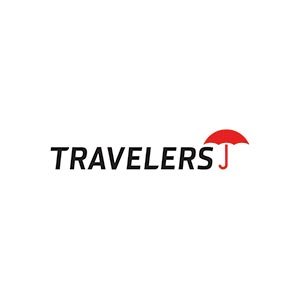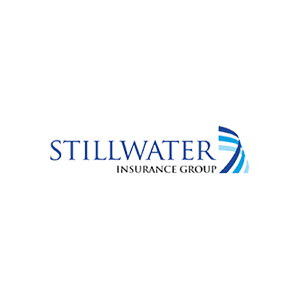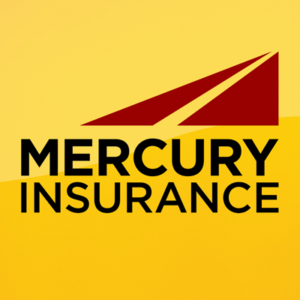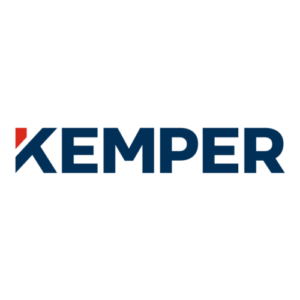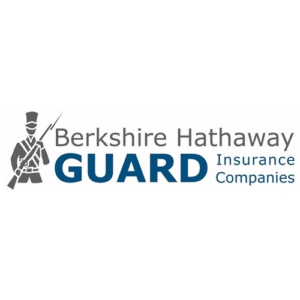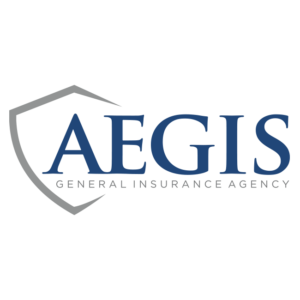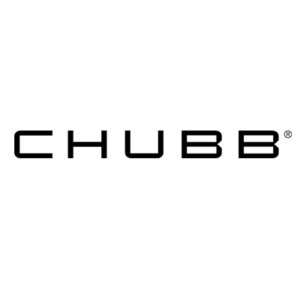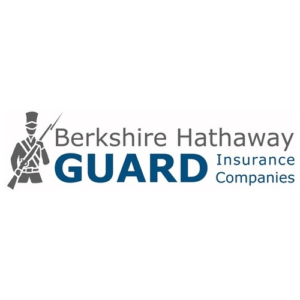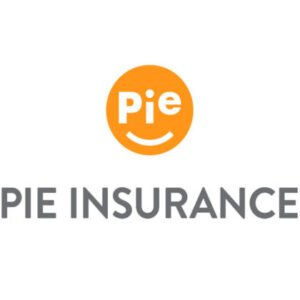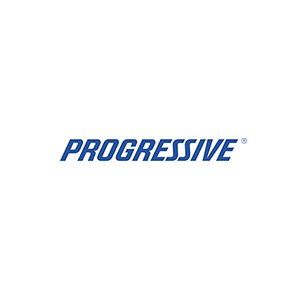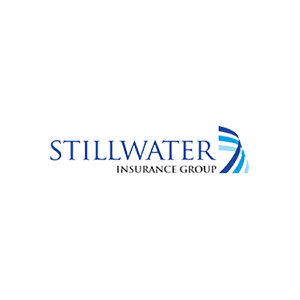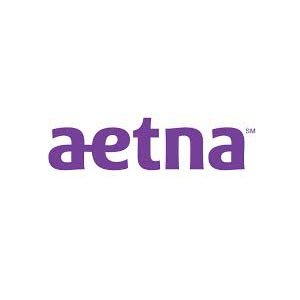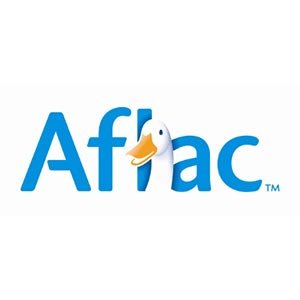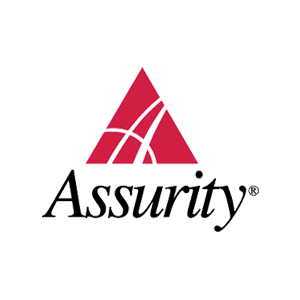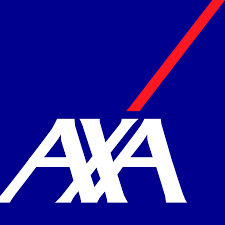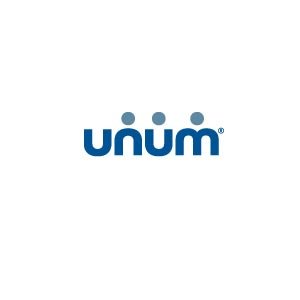Products
Personal Lines
Vehicle
Auto Policy
Auto insurance, also known as car insurance, is a type of insurance policy that protects the policyholder against financial loss in the event of an incident involving a vehicle they own. This includes coverage for:
-
Liability Coverage: If the policyholder is at fault in a collision, this covers the costs of property damage and bodily injury claims made against them.
-
Collision Coverage: This covers the cost of repairs to the policyholder’s vehicle after an accident, regardless of who is at fault.
-
Comprehensive Coverage: This covers damage to the policyholder’s vehicle that is not caused by a collision, such as theft, fire, natural disasters, or vandalism.
-
Medical Payments/Personal Injury Protection: This covers the medical expenses for the policyholder and their passengers in case of an accident, regardless of who is at fault.
-
Uninsured/Underinsured Motorist Coverage: This provides coverage if the policyholder is involved in an accident with a driver who does not have sufficient insurance or no insurance at all.
- Rental Car Coverage: Typically, car insurance does not compensate for rental cars. However, contracts may include a separate option or additional insurance for rental car coverage. Please note that this rental car refers to the one provided during the repair of your own vehicle, not the rental car needed for travel.
- Roadside Assistance: This provides services such as towing or minor repairs if your vehicle breaks down while you’re on the road.
The exact coverage and policy terms can vary depending on the insurance provider and the specific policy chosen by the policyholder.
Motorcycle Policy
A motorcycle policy, or motorcycle insurance, is a type of insurance policy specifically designed for motorcycles and similar vehicles. Its primary aim is to offer financial protection in the event of a motorcycle accident, theft, or damage. The coverage provided by a motorcycle policy can include:
-
Liability Coverage: This covers the cost of bodily injury and property damage to others if you’re at fault in an accident.
-
Collision Coverage: This covers the cost of repairs to your motorcycle if it’s damaged in an accident, regardless of who is at fault.
-
Comprehensive Coverage: This covers the cost of loss or damages due to events other than accidents, such as theft, vandalism, fire, or natural disasters.
-
Medical Payments/Personal Injury Protection: This covers the medical costs for you and your passenger(s) if injured in a motorcycle accident, regardless of who is at fault.
-
Uninsured/Underinsured Motorist Coverage: This covers your costs if you’re in an accident with a motorist who doesn’t have insurance or doesn’t have enough insurance to cover your expenses.
-
Custom Parts and Equipment: If you’ve added any custom parts or equipment to your motorcycle, this coverage will help to repair or replace them if they’re damaged or stolen.
-
Roadside Assistance: This provides services such as towing or minor repairs if your motorcycle breaks down while you’re on the road.
The specifics of a motorcycle policy can vary widely depending on the insurance company and the policyholder’s preferences.
Off-Road Vehicle Policy
Off-road vehicle insurance is a type of insurance policy that provides coverage for vehicles designed for use off public roads and highways. These can include ATVs (All Terrain Vehicles), dirt bikes, snowmobiles, dune buggies, or other similar vehicles.
The coverage provided by off-road vehicle insurance can include:
-
Collision Coverage: This covers the cost of repairs to your off-road vehicle if it’s damaged in an accident.
-
Comprehensive Coverage: This covers the cost of loss or damages to your vehicle due to events other than collisions, such as theft, vandalism, fire, or natural disasters.
-
Liability Coverage: This covers the costs if you’re responsible for causing bodily injury or property damage to others while operating your off-road vehicle.
-
Medical Payments: This covers the medical costs for you and your passengers if anyone is injured while on your off-road vehicle, regardless of who is at fault.
-
Uninsured/Underinsured Motorist Coverage: This covers your costs if you’re in an accident with a motorist who doesn’t have insurance or doesn’t have enough insurance to cover your expenses.
-
Transport Trailer Coverage: This covers damage to the trailer used to transport your off-road vehicle.
-
Accessory Coverage: This provides protection for accessories and enhancements made to your off-road vehicle, such as winches, roll cages, etc.
The specifics of off-road vehicle insurance can vary depending on the insurance company, the type of off-road vehicle, and the policyholder’s preferences. It’s important to note that standard auto insurance policies typically do not cover off-road vehicles, and separate coverage is often required.
Motorhome Policy
A motorhome policy, also known as motorhome insurance or RV (Recreational Vehicle) insurance, is a type of insurance policy designed to provide coverage for motorhomes and other types of recreational vehicles. This policy aims to protect the policyholder from financial losses associated with accidents, damages, or theft involving their motorhome.
Coverage under a motorhome policy can include:
-
Liability Coverage: This covers the cost of bodily injury and property damage to others if you’re at fault in an accident.
-
Collision Coverage: This covers the cost of repairs to your motorhome if it’s damaged in an accident, regardless of who is at fault.
-
Comprehensive Coverage: This covers the cost of loss or damages due to events other than accidents, such as theft, vandalism, fire, or natural disasters.
-
Medical Payments/Personal Injury Protection: This covers the medical costs for you and your passengers if injured in a motorhome accident, regardless of who is at fault.
-
Uninsured/Underinsured Motorist Coverage: This covers your costs if you’re in an accident with a motorist who doesn’t have insurance or doesn’t have enough insurance to cover your expenses.
-
Roadside Assistance: This provides services such as towing or minor repairs if your motorhome breaks down while you’re on the road.
-
Contents Coverage: This covers personal belongings inside the motorhome that may be damaged, destroyed, or stolen.
-
Full Time RV Coverage: If you live in your motorhome full-time, this type of coverage offers additional protections similar to those found in a homeowners policy, such as liability coverage and additional living expenses.
The specifics of a motorhome policy can vary widely depending on the insurance company, the type of motorhome, and the policyholder’s preferences.
Boat Policy
A boat policy, also known as boat insurance, is a type of insurance policy that provides coverage for various types of watercraft, including motorboats, sailboats, and personal watercraft like jet skis. The policy offers protection against financial losses related to accidents, damages, or theft involving the insured boat.
Coverage under a boat policy can include:
-
Liability Coverage: This covers the costs if you’re responsible for causing bodily injury or property damage to others while operating your boat.
-
Collision Coverage: This covers the cost of repairs to your boat if it’s damaged in an accident, regardless of who is at fault.
-
Comprehensive Coverage: This covers the cost of loss or damages to your boat due to events other than accidents, such as theft, vandalism, fire, or natural disasters.
-
Medical Payments: This covers the medical costs for you and your passengers if anyone is injured while on your boat, regardless of who is at fault.
-
Uninsured/Underinsured Boater Coverage: This covers your costs if you’re in an accident with a boater who doesn’t have insurance or doesn’t have enough insurance to cover your expenses.
-
Towing and Assistance: This covers the cost of emergency assistance, such as towing to a repair facility if your boat breaks down on the water.
-
Personal Property Coverage: This covers personal belongings on the boat that may be damaged, destroyed, or stolen.
-
Unattached Equipment Coverage: This provides protection for equipment that isn’t permanently attached to your boat, such as fishing gear or personal watercraft.
The specifics of a boat policy can vary depending on the insurance company, the type of boat, and the policyholder’s preferences. It’s also important to note that some smaller boats may be covered under a homeowner’s insurance policy, but larger or more expensive boats typically require a separate boat policy.
Home & Property
Homeowners Policy
A Homeowners Policy, also known as Homeowners Insurance, is a type of property insurance that covers losses and damages to an individual’s house and to assets in the home. This policy also provides liability coverage against accidents in the home or on the property.
The standard Homeowners Policy is typically divided into several components:
-
Dwelling Coverage: This covers the physical structure of your home (walls, roof, etc.) if it’s damaged by a covered peril.
-
Other Structures Coverage: This covers structures not attached to your home, such as detached garages, storage sheds, and fences.
-
Personal Property Coverage: This covers your personal belongings within the home, such as furniture, appliances, and clothing, whether they’re damaged or stolen.
-
Liability Protection: This covers you if someone is injured on your property and decides to sue. It also covers you if you or a family member cause damage to others’ property.
-
Additional Living Expenses (ALE): This covers the extra costs you might incur if your house is damaged and you need to live elsewhere during repairs.
-
Medical Payments Coverage: This covers medical expenses for guests if they are injured on your property, regardless of who is at fault.
Each Homeowners Policy has a “Deductible”, the amount you must pay out-of-pocket for a loss before the insurance coverage steps in. The specifics of what damage and loss is covered by a Homeowners Policy can vary greatly, so one should read any policy documents carefully.
Rental Dwelling Policy
A Rental Dwelling Policy, also commonly known as Landlord Insurance, is a type of insurance policy specifically designed for properties rented out to tenants. It protects the property owner, or landlord, from financial losses associated with rental properties.
The policy typically includes the following types of coverage:
-
Property Damage: This covers damage to the building itself, such as from fire, windstorm, vandalism, or other covered perils. It often includes any structures attached to the building, such as a garage, as well as any on-site amenities like a pool or landscaping.
-
Loss of Rental Income: This covers the landlord’s loss of rental income if a covered loss makes the property uninhabitable and tenants are forced to move out.
-
Liability Coverage: This covers legal and medical costs if a tenant or visitor is injured on the property due to a maintenance issue or accident for which the landlord is found legally responsible.
-
Personal Property Coverage: If the landlord leaves personal property (like appliances or furniture) in the rental property for use by the tenant, this coverage can protect against damage or loss of those items.
It’s important to note that a rental dwelling policy typically does not cover the tenant’s personal belongings. Tenants are usually recommended to get their own renters insurance policy to cover their personal property and provide liability protection for themselves.
Renter Policy
A renters policy, also known as renters insurance, is a type of insurance that covers a renter’s personal property in the event of unforeseen circumstances such as theft, fire, or damage. It also provides liability coverage for the renter in case someone is injured on the premises and decides to sue.
Here are the typical components of a renters policy:
-
Personal Property Coverage: This covers the cost of replacing the renter’s belongings (such as electronic devices, clothes, and furniture) if they’re damaged or stolen. This coverage usually applies whether the damage or theft occurs at home or away from home.
-
Liability Coverage: This covers legal expenses if someone is injured in the renter’s home or by the renter’s actions and decides to sue. It can also cover some damages caused by the renter to others’ property.
-
Medical Payments Coverage: This covers medical costs if a guest is injured in the renter’s home, regardless of who is at fault.
-
Loss of Use: This covers additional living expenses if the renter’s home becomes uninhabitable due to a covered loss, such as a fire, and the renter needs to temporarily live elsewhere.
It’s important to note that a renters policy does not cover the physical building or structure of the rented property. That is the responsibility of the landlord’s insurance. The renter’s policy covers only the renter’s own belongings and liability.
Personal Article Policy
A Personal Articles Policy (PAP), also known as a personal property floater or a valuable personal property insurance, is a type of insurance policy that provides extended coverage for high-value items that are typically not fully covered by standard homeowners or renters insurance policies.
Here’s what a Personal Articles Policy typically includes:
-
Coverage for High-Value Items: This policy covers specific items of high value such as jewelry, artwork, musical instruments, high-end electronics, collectibles, antiques, and other valuable items. Each item is usually individually listed, or “scheduled,” on the policy, often with a description and appraisal value.
-
All-Risk Coverage: Unlike standard policies, a PAP usually provides all-risk coverage, meaning it covers losses caused by all types of risks unless specifically excluded. This can include accidental loss or damage, theft, fire, and more.
-
Worldwide Coverage: A PAP often provides coverage no matter where in the world an incident occurs, which is beneficial for items you travel with, like a camera or jewelry.
-
No Deductible: Many PAPs do not have a deductible, meaning the insurer will cover the full amount of a covered loss up to the insured value of the item.
It’s important to note that while a PAP provides broad coverage, it does not cover every possible type of loss. For example, it generally does not cover normal wear and tear or mechanical breakdown. Always check the specific terms of a policy for detailed information about what is and isn’t covered.
Life
Term Life
Term life insurance is a type of life insurance policy that provides coverage for a specific period of time, or term. This term is typically a set number of years, such as 10, 20, or 30 years, and if the policyholder dies during this term, the death benefit is paid out to the designated beneficiaries.
Term life insurance is popular among many people due to its relatively affordable premiums and simplicity. However, once the set term expires, the insurance policy ends, and securing a new insurance policy could come with higher premiums, depending on the age and health status of the policyholder.
A significant point to note is that term life insurance does not return the premiums at the end of the term, unlike whole life insurance. This is because term life insurance is focused on providing coverage for death risk and is not used for purposes such as savings or investments.
Universal Life
Universal life insurance is a type of permanent life insurance that offers both a death benefit and a cash value component, which can earn interest over time. This type of insurance is designed to provide more flexibility than whole life insurance, as policyholders can adjust their premiums and death benefits within certain limits.
The cash value component of a universal life insurance policy grows tax-deferred. This means that any interest earned on the cash value is not taxed until it is withdrawn. In addition, policyholders can usually borrow against the cash value of the policy or make withdrawals during their lifetime to help meet needs such as paying for a child’s education or supplementing retirement income.
However, it’s important to note that reductions or withdrawals can affect the death benefit and may have tax implications. Also, universal life insurance policies generally have higher premiums than term life insurance because they offer lifelong coverage and have a cash value component.
Whole Life
Whole life insurance is a type of permanent life insurance that provides lifetime coverage with a guaranteed death benefit, guaranteed cash value accumulation, and fixed premiums.
In this policy, a portion of your premium goes toward the insurance cost, while the rest builds up the cash value. The cash value grows on a tax-deferred basis, which means you won’t pay taxes on its gains while they’re accumulating.
You can borrow against the cash value, tax-free, while you’re alive. But remember, any outstanding loans with interest will be deducted from the death benefit if not repaid by the time of death.
It’s important to note that whole life insurance typically comes with higher premiums than term life insurance, but unlike term life insurance, it has the potential to provide benefits beyond just a death payout through its cash value component.
Annuity
Annuity
An annuity is a long-term, tax-deferred vehicle designed for retirement. It’s a contract between you and an insurance company, where the insurer promises to make periodic payments to you, starting immediately or at some future time.
There are two main types of annuities:
-
Immediate annuity: You make a lump-sum payment to an insurance company, and they start making payments to you right away.
-
Deferred annuity: You make contributions over time, and the payments from the insurance company start at some point in the future.
Annuities can provide a steady stream of income in retirement, which can be particularly useful if you’re concerned about outliving your other retirement savings. However, they can also be complex and come with fees, so it’s important to understand the terms before purchasing one.
Personal Liability
Personal Liability Umbrella Policy
A personal umbrella policy, or umbrella insurance, is a type of insurance that provides an extra layer of liability coverage above your primary insurance policies, like auto, home, or boat insurance.
The purpose of a personal umbrella policy is to help protect you from large and potentially devastating liability claims or judgments. It kicks in when the liability limits on your other policies have been reached.
For example, if you’re at fault in a car accident that injures another driver, your regular car insurance may cover the other driver up to the limit of the policy. If the other driver’s medical expenses exceed that limit, your umbrella policy would help cover the remainder, up to your umbrella policy’s limit.
Umbrella policies often provide a high limit of coverage, typically starting in the range of $1 million. They can also provide coverage for claims that may be excluded by other liability policies, such as false arrest, libel, slander, and liability coverage on rental units you own.
Health & Disability
Medicare Supplement Insurance
Medicare Supplement Insurance, also known as Medigap, is a type of health insurance that can help pay some of the health care costs that Original Medicare doesn’t cover. This can include out-of-pocket expenses like co-payments, coinsurance, and deductibles.
There are several different Medigap plans available, each labeled with a different letter (A, B, C, D, F, G, K, L, M, and N). Each plan offers a different level of coverage, but all plans must cover basic benefits. For example, all Medigap policies must cover at least a portion of the cost of Medicare Part A coinsurance and hospital costs.
It’s important to note that Medigap policies do not cover prescription drugs. If you want prescription drug coverage, you can join a Medicare Prescription Drug Plan (Part D).
Medicare Supplement Insurance is sold by private insurance companies, which means the costs and availability can vary. Furthermore, it’s also worth noting that a Medigap policy only covers one person. If you and your spouse both want Medigap coverage, you’ll each have to buy separate policies.
Long Term Disability
Long-Term Disability Insurance (LTD) is a type of insurance that guarantees a certain percentage of income if the policyholder becomes unable to work for a long period due to physical injury or illness.
This insurance is typically provided in the workplace and offers benefits in the range of 50% to 60% of income. Long-term disability insurance usually begins after a short waiting period, often when short-term disability benefits end.
Long-term disability insurance can provide benefits for several years after a disability occurs, or until the policyholder retires. The benefits are usually paid monthly and may vary depending on the cause of the policyholder’s inability to continue working.
Long-term disability insurance can be particularly important for high earners or those in certain professions. They may face significant financial loss if they lose their jobs, and long-term disability insurance can help mitigate this loss.
Commercial Lines
BOP
BOP
A Business Owner’s Policy (BOP) is a special type of commercial insurance designed for small and medium-sized businesses. By bundling general liability insurance and property insurance into a single policy, BOPs typically offer a cost savings over purchasing the coverage separately.
The general liability portion of a BOP protects a business against claims of bodily injury, property damage, and personal and advertising injury that could arise from the business’s operations. The property insurance portion of a BOP protects the physical location of the business and its contents, such as inventory, office equipment, and furniture.
However, a BOP doesn’t cover everything. It typically does not include professional liability, auto insurance, worker’s compensation, or health and disability insurance. Businesses need separate insurance policies to cover professional services, vehicles, and their employees.
CPP
Commercial Package Policy
A Commercial Package Policy (CPP) is a bundle of various types of commercial insurance. It typically provides a variety of insurance benefits needed by businesses, making it more convenient and cost-effective than purchasing each type of insurance individually.
A CPP generally includes property insurance and general liability insurance as basic components, with other types of insurance such as crime insurance, auto insurance, marine insurance, and others added as needed. This allows for customization to meet specific business needs and risks, offering flexibility in adjusting the scope of insurance coverage to meet business requirements.
However, a Commercial Package Policy does not cover all types of risks. For example, health insurance, life insurance, and disability insurance provided to employees are typically not included in a CPP, and these types of insurance need to be purchased separately.
Commercial Auto
Commercial Auto Policy
A Commercial Auto Policy is an insurance that provides coverage for all vehicles owned, leased, rented, or used by employees in relation to business operations.
This policy typically provides coverage for physical damage (collision or non-collision related damages), auto liability (damages to other people’s property or bodies), medical payments, vehicle theft, and uninsured/underinsured motorist protection.
While similar to a personal auto policy, a commercial auto policy can have broader coverage and may cost more in premiums. This is because commercial vehicles are exposed to greater risks than personal vehicles. For example, these vehicles are typically driven more, carry heavier loads, and may be parked in unexpected locations. All these factors justify higher insurance premiums.
General Liability
General Liability
General Liability Insurance is an insurance that provides coverage for a variety of legal liabilities that a business can incur during its operations.
This insurance typically provides coverage for damages and injuries, property damage, and personal and advertising damages. For example, if a customer is injured at the business premises, if the business’s product causes damage, or even if the business’s advertising causes damage to another party, this insurance can provide coverage.
General Liability Insurance is an essential insurance that meets the basic insurance requirements of a business, protecting the business from unexpected costs and lawsuits. However, this insurance does not provide coverage for professional liabilities (e.g., deliberate mistakes by professionals), injuries to employees, or car accidents. In these cases, Professional Liability Insurance, Workers Compensation Insurance, and Commercial Auto Insurance are respectively required.
Workers Comp
Workers Compensation
A Workers Compensation Policy is an insurance that compensates employees for medical expenses and a portion of their wages if they are injured or become ill while performing their duties.
This policy provides protection for a variety of accidents and illnesses that occur during the performance of duties, including medical expenses, rehabilitation costs, disability compensation, and death benefits. Additionally, it allows employees to receive compensation without filing a lawsuit, protecting the business from the costs and liabilities associated with lawsuits.
In some countries, such as the United States, businesses are required to have a Workers Compensation Policy, and the premiums are determined based on the size, industry, and risk level of the business. However, this insurance does not cover accidents or illnesses that occur during activities outside of work.
Bonds
Surety Bonds
Surety Bonds are contracts where a surety company pays compensation if a contract or legal obligation is not fulfilled. This is fundamentally a three-party contract involving the principal (usually the individual or company that needs to fulfill the contract), the surety (the surety company), and the obligee (the individual or institution expecting the fulfillment of the contract or legal obligation).
Surety bonds ensure that if the principal fails to fulfill the contract or legal obligation, the surety will pay compensation to the obligee. This involves the surety assuming the risk for the principal, providing compensation for the obligation that the principal failed to fulfill.
Surety bonds are used in various situations such as construction projects, public contracts, real estate rentals, and court judgments. Types of surety bonds include contract surety bonds, court surety bonds, and commercial surety bonds.


